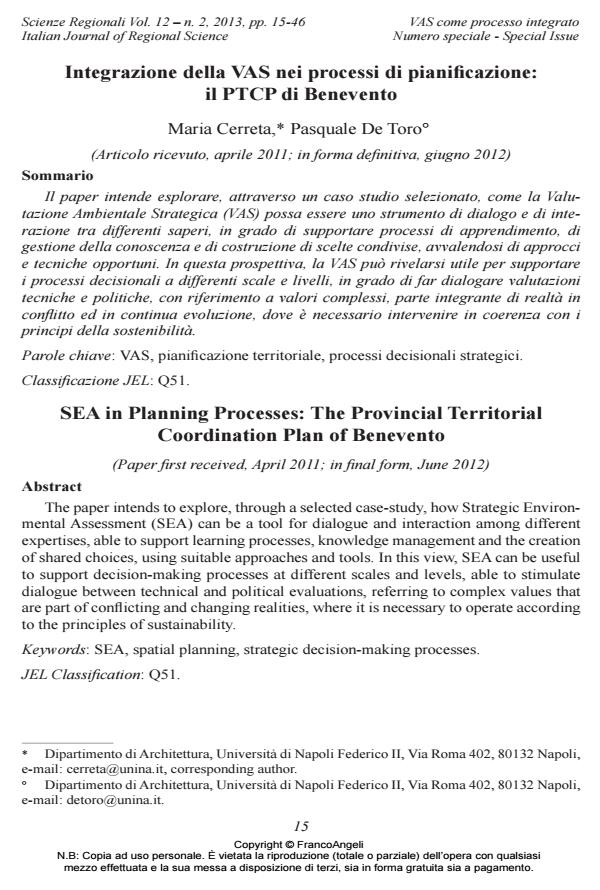SEA in Planning Processes: The Provincial Territorial Coordination Plan of Benevento (Paper first received, April 2011; in final form, June 2012)
Journal title SCIENZE REGIONALI
Author/s Maria Cerreta, Pasquale De Toro
Publishing Year 2013 Issue 2013/2
Language Italian Pages 31 P. 15-45 File size 1228 KB
DOI 10.3280/SCRE2013-002002
DOI is like a bar code for intellectual property: to have more infomation
click here
Below, you can see the article first page
If you want to buy this article in PDF format, you can do it, following the instructions to buy download credits

FrancoAngeli is member of Publishers International Linking Association, Inc (PILA), a not-for-profit association which run the CrossRef service enabling links to and from online scholarly content.
Il paper intende esplorare, attraverso un caso studio selezionato, come la Valutazione Ambientale Strategica (VAS) possa essere uno strumento di dialogo e di interazione tra differenti saperi, in grado di supportare processi di apprendimento, di gestione della conoscenza e di costruzione di scelte condivise, avvalendosi di approcci e tecniche opportuni. In questa prospettiva, la VAS può rivelarsi utile per supportare i processi decisionali a differenti scale e livelli, in grado di far dialogare valutazioni tecniche e politiche, con riferimento a valori complessi, parte integrante di realtà in conflitto ed in continua evoluzione, dove è necessario intervenire in coerenza con i principi della sostenibilità.
Keywords: VAS, pianificazione territoriale, processi decisionali strategici.
Jel codes: Q51
- New Metropolitan Perspectives Alessio D’Auria, Irina Di Ruocco, pp.774 (ISBN:978-3-031-06824-9)
Maria Cerreta, Pasquale De Toro, Integrazione della VAS nei processi di pianificazione: il PTCP di Benevento in "SCIENZE REGIONALI " 2/2013, pp 15-45, DOI: 10.3280/SCRE2013-002002